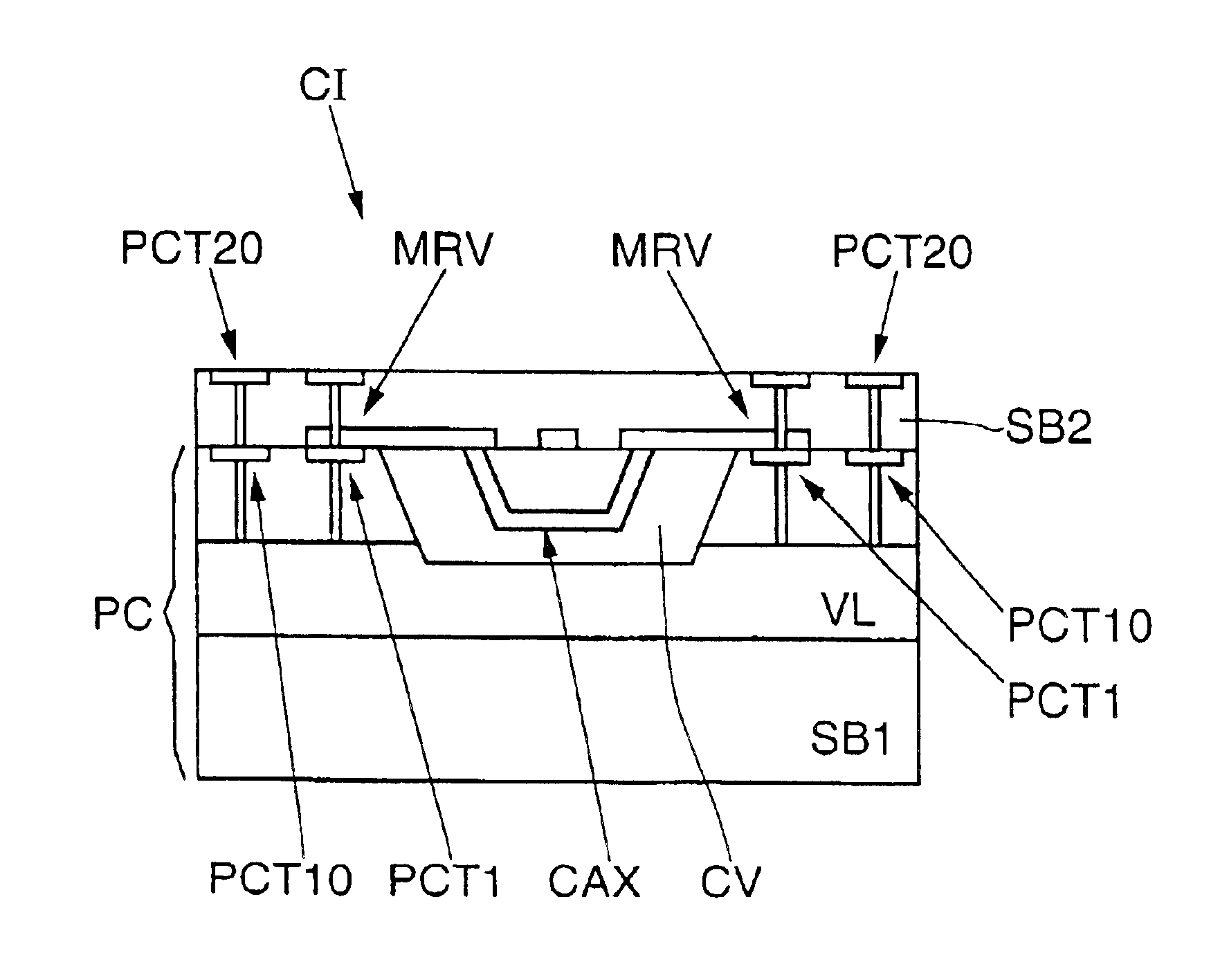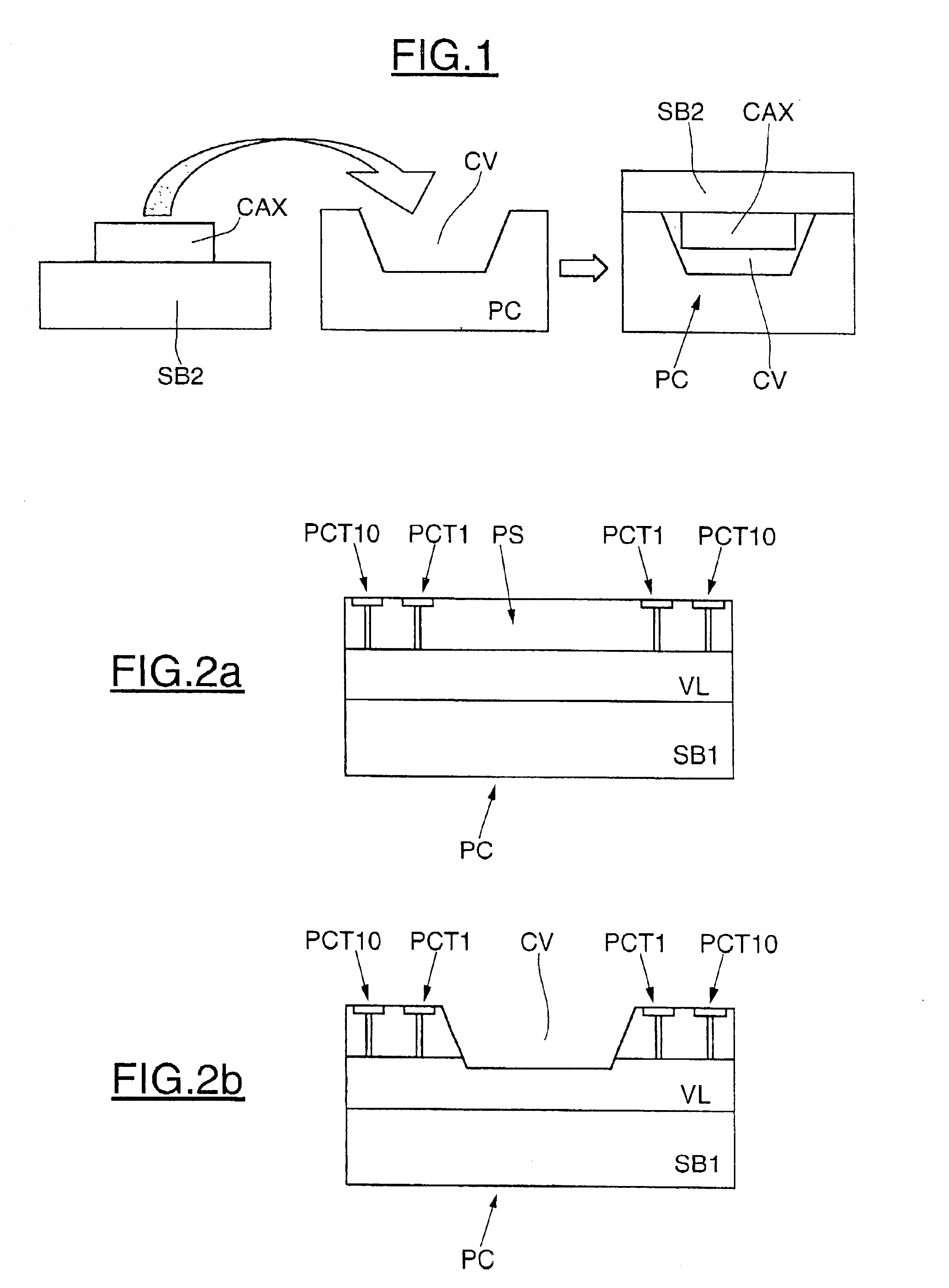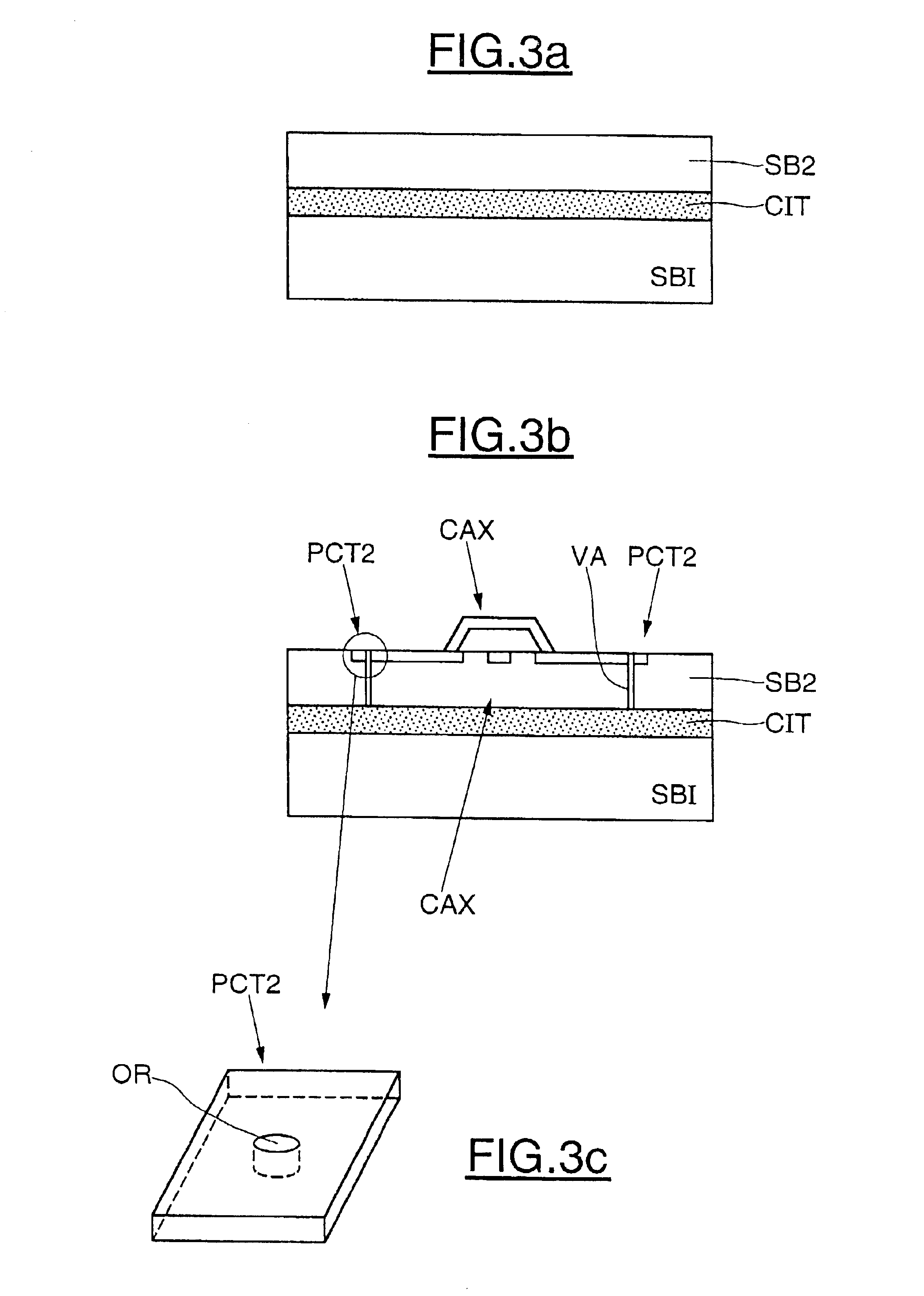Integrated circuit comprising an auxiliary component, for example a passive component or a microelectromechanical system, placed above an electronic chip, and the corresponding fabrication process
a technology of integrated circuits and components, applied in the direction of instruments, soldering devices, photomechanical devices, etc., can solve the problems of discrete nature of solder bumps that do not protect the side walls of components, damage to the interconnects nor the components to be covered by the chip procedure, and no method of protecting both components, so as to optimize the mechanical integrity of the whole assembly and improve the mechanical strength of the assembly
- Summary
- Abstract
- Description
- Claims
- Application Information
AI Technical Summary
Benefits of technology
Problems solved by technology
Method used
Image
Examples
Embodiment Construction
In the left-hand part of FIG. 1, the reference SB2 denotes a semiconductor substrate on which an auxiliary component CAX, for example a passive component, or else a microelectromechanical system, has been produced.
Moreover, on a substrate separate from the substrate SB2, in a conventional manner known per se, an electronic chip PC is produced and a cavity CV intended to house the component CAX is provided, at a chosen point, in the upper portion of this electronic chip PC.
Next, as illustrated in the right-hand part of FIG. 1, the upper face (which has become the lower face in the right-hand part of FIG. 1) of the substrate SB2 is fastened to that part of the upper face of the electronic chip lying outside the cavity CV.
An integrated circuit is then obtained which, after packaging, comprises an assembly consisting of an electronic chip PC and an auxiliary component CAX, the upper surface of which assembly is approximately plane.
This method of implementing the invention will now be ex...
PUM
| Property | Measurement | Unit |
|---|---|---|
| temperatures | aaaaa | aaaaa |
| height | aaaaa | aaaaa |
| adhesion | aaaaa | aaaaa |
Abstract
Description
Claims
Application Information
 Login to View More
Login to View More - R&D
- Intellectual Property
- Life Sciences
- Materials
- Tech Scout
- Unparalleled Data Quality
- Higher Quality Content
- 60% Fewer Hallucinations
Browse by: Latest US Patents, China's latest patents, Technical Efficacy Thesaurus, Application Domain, Technology Topic, Popular Technical Reports.
© 2025 PatSnap. All rights reserved.Legal|Privacy policy|Modern Slavery Act Transparency Statement|Sitemap|About US| Contact US: help@patsnap.com



